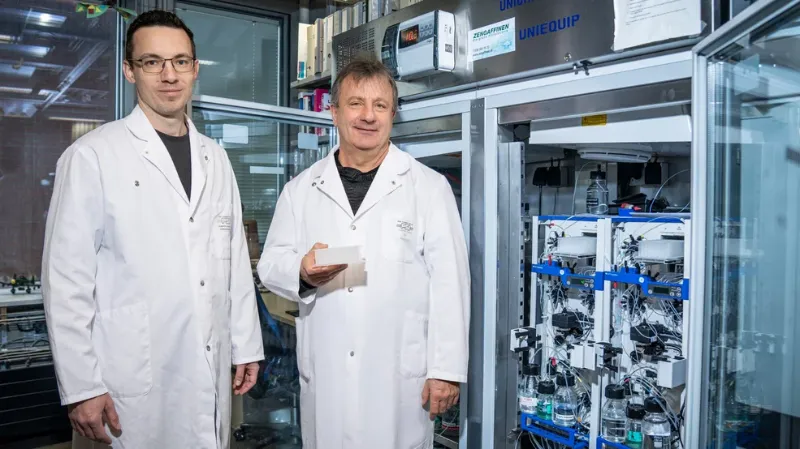How botox enters our cells
Botulinum toxin A1, better known under the brand name Botox, is not only a popular cosmetic agent, but also a highly effective bacterial neurotoxin that – when carefully dosed – can be used as a drug. It blocks the transmission of signals from nerves to muscles: This can relax muscles under the skin, which in cosmetics is used to smooth facial features. It can also alleviate conditions that are caused by cramping muscles or faulty signals from nerves, such as spasticity, bladder weakness, or misalignment of the eyes. However, if the dose is too high, the use of Botox can be fatal due to paralysis of the respiratory muscles. This can happen as a result of bacterial meat poisoning and is called botulism.
To make the most effective use of botulinum toxin as a drug, to precisely control its action, and to expand the range of possible applications of the toxin, researchers want to better understand how the toxin enters nerve cells to exert its effect. Until now, little was known about this. “This is mainly because we had no structural data on what the toxin looks like in its full length form when binding to its nerve cell's receptor,” says Richard A. Kammerer of the PSI Center for Life Sciences. So far there had only been studies on the structure of individual domains of the toxin – that is, specific parts of its complex molecular structure – and on the structure of such domains in complex with the receptor or one of its domains.
Observations at minus 160 degrees
To change this, Kammerer and his team joined forces with Volodymyr M. Korkhov's research group. This group, which works in the same laboratory at PSI, specialises in determining the structure of proteins, particularly membrane proteins. In the joint study, the researchers observed samples of the neurotoxin alone and with the receptor in a so-called cryo-electron microscope. In cryo-electron microscopy, samples are shock-frozen at minus 160 degrees without ice crystals forming. “This way, the sample retains its structure permanently and we can study it at our leisure,” explains Basavraj Khanppnavar, first author of the study. “This gives us particularly precise insights into the molecular architecture,” adds his colleague and fellow first author Oneda Leka.
In this way, the researchers determined both the structure of the entire toxin on its own and the structure of the molecular complex of the toxin with the receptor. They did this at low and neutral pH values, such as those found in the so-called synaptic vesicle. After the toxin docks onto the receptor, this vesicle-like cell organelle takes up the toxin and transports it into the interior of the cell.
The compact form can interact better
As it turns out, the subsequent drop in the pH value of the maturing vesicle is crucial for the transport of the toxin across the vesicle membrane into the cytosol – this is the part of the cell where most biochemical reactions take place, and also where the toxin exerts its effect. “At a low pH value of around 5.5, the toxin bends from its usual elongated, open form into a spherical, compact form,” Volodymyr Korkhov reports. This brings the crucial domains of the protein close to the vesicle membrane. “In the elongated form observed at neutral pH value of around 7, however, they are too far away from the membrane for interaction.» In that case, the so-called translocation of the toxin from the interior of the vesicle into the cytosol of the cell cannot take place.
Of all the research groups working on this topic, the PSI team is the first in the world to provide structural data on the full length toxin in complex with the receptor before translocation. “This gives us a much more realistic idea of the crucial mechanisms of translocation,” says Kammerer. Further studies are needed, however, before translocation will be fully resolved. “But with the study now published, we have already taken an important step that could help to use botulinum neurotoxin much more effectively in the future, for example in the treatment of pain.”
